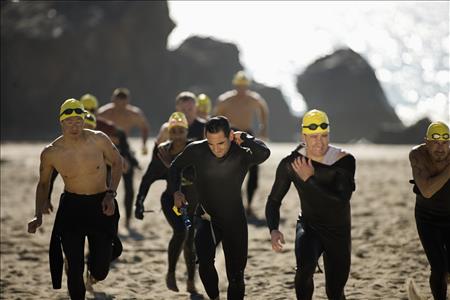How to Choose the Perfect Triathlon Wetsuit
January 22, 2024


If you are planning to buy a triathlon wetsuit, be sure to get one that you will feel the most comfortable in. Sizing and fit can be the difference between the suit that works and the one that doesn’t, regardless of the style of the suit. Tri wetsuits are known for their precise neoprene width that vary on different areas of the wetsuit. Thicker areas are for easy buoyancy while thinner areas are for flexibility. This guide will go over all of the basics about tri wetsuits as well as teach you how to know when a wetsuit is right for you.
The Proper Fit
When choosing a tri wetsuit, the most important factor to consider is fit. If the fit is not right, you are not going to be comfortable and the wetsuit will not be able to perform properly for you. Ultimately, the correct fit depends on your preferences.
How Should A Wetsuit Fit?
- Snug but not tight.
- No folds or excess material.
- Full range-of-motion through shoulders.
- Neckline should be comfortable and not suffocating.
- Arm and leg holes should be snug so water cannot get through.
What to Look For
1. Buoyancy / Flexibility
- The rubber/neoprene used to make wetsuits floats naturally.
- The higher you float in the water, the easier and faster you can swim.
- The thicker the material, the more buoyant but less flexible it is—find your ideal balance.
- The thinner layers provide more flexibility so it is easier to move, preserving energy.
- Arm and shoulder area should have thinner neoprene. Note: the thinner the neoprene the more expensive the wetsuit is.
- Thicker neoprene should be in chest and leg areas—how thick is based on your preference.
2. Warmth
- Tri wetsuits hold a small amount of water inside the suit so your body can warm the water to form a barrier between you and the cold.
- Be sure the wetsuit is tight enough because too much water getting in slows you down.
3. Hydrodynamics
- Tri wetsuits with a silicone surface make them slippery through the water, but it is not required.
- This feature is found on most mid- and high-end wetsuits.
What Is Too Tight?
- Should have no painful restriction anywhere.
- Should have a full range-of-swim-motion so arms move freely and comfortably.
- Should not feel like it is riding up in crotch area (may mean wetsuit is too short).
- Should move with you and not against you; suit should feel like a thick second-skin.
- Should have certain degree of comfort in your wetsuit so you can perform optimally, but not so much comfort that it defeats the purpose of performance properties of the suit.
Thickness and Material
Neoprene thickness ranges from about 1mm-5mm (5mm is the maximum thickness allowed in competitions). There is “stretchability” throughout tri wetsuits, but the thinner, most-flexible material is around your shoulders and arms for fast, easy movement.
 The Cut
The Cut
- Full sleeve – Gives full-body coverage and provides maximum buoyancy.
- Sleeveless – Does not cover arms, but still covers legs. Offers maximum range of motion.
Full-sleeved suits are more buoyant and warmer, which is ideal for colder swims. Sleeveless suits are easier to get out of and offer more arm movement. Ultimately, your personal preference will determine your decision. Some people are more comfortable with sleeveless wetsuits, even in colder water.
Men’s tri wetsuits have a bit of extra room in the crotch and a narrower hip area than women’s tri suits. Women’s wetsuits also have extra room in the chest.
The Bottom Line:
A triathlon suit should fit like a second-skin; it shouldn’t be too loose or too tight and you should have a full range of motion in your shoulders. The three wetsuit qualities to pay attention to are buoyancy/flexibility, warmth, and hydrodynamics. The full-sleeved and sleeveless wetsuits simply depend on your preference. When searching for your ideal wetsuit, stay with what you are most comfortable in because that is ultimately the most important. Your perfect wetsuit is waiting for you, now it’s time to go find it!
Continue to Part 2: “How to Put On and Care For Your Wetsuit”? Click here to read.
 The Cut
The Cut


